Historical Info
A multicultural city…
Ioannina arise multiculturally and multifacetedly not only through narrations. Churches with remarkable architecture, mosques and a synagogue, the largest in Greece, testify the multicultural character of the city. The coexistence of Christians, Muslims and Jews was established during the administration of Ali Pasha.
The population exchange after the Minor Asia destruction and annihilation of most Jews by the Germans changed the proportions of the population. Muslims may not exist today and the Jews may be few, only those who survived the concentration camps, but the city did not throw off this part of the identity. Today, there are four mosques, three of them very well preserved, while the Jewish synagogue, built in 1826, continues to exist and be the largest and most beautiful of the surviving religious buildings of the Greek Jews.
THE CITY -THE HISTORY
The location, antiquity, Christian times to the 10th century and the first reports of the place name.
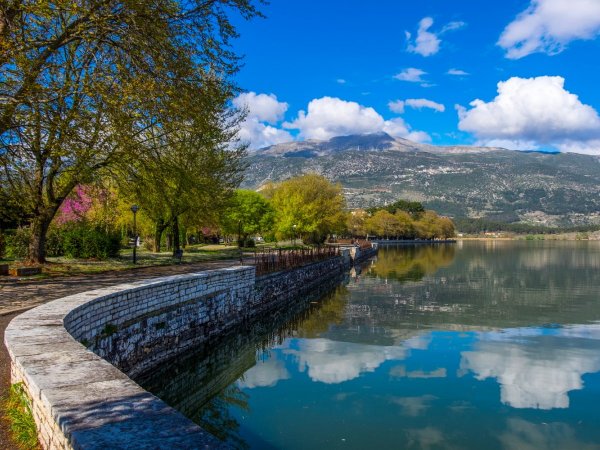
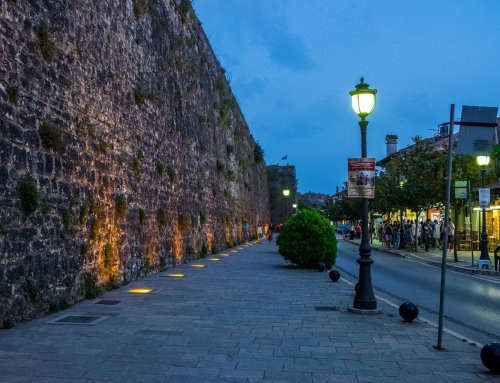
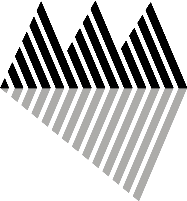
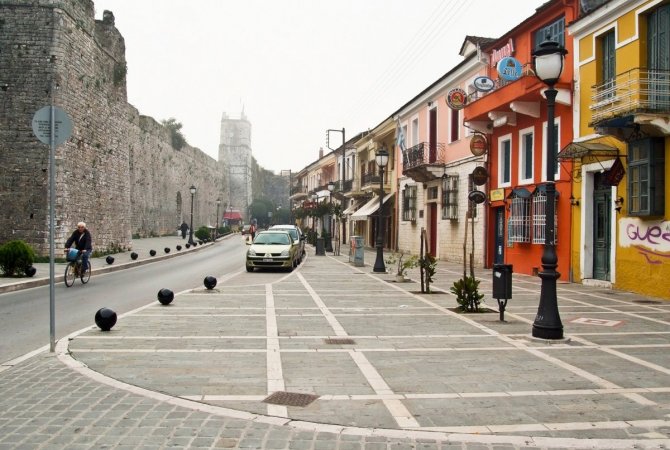
Location, antiquity, Christian times
The city of Ioannina is built on the west bank of Lake Pamvotis, almost in the center of a basin, which is defined by Mountains Mitsikeli - Tomaros - Xerovouni. A rocky peninsula, which leads northeast and southeast in two heights, was the core of the city historically and spatially. This naturally fortified position was fortified in the Hellenistic period, as evidenced by a wall section, revealed under Ottoman and Byzantine fortifications near the main gate of the castle. Sporadically throughout the current castle, excavations have revealed late Classical and Hellenistic building remains.
The investigation has not progressed in association with the ancient site references sources. The historical map of that period supplement neighboring ancient citadels of the Grand Gardikiou, which has been identified with the Passarona, capital of Molossos and Kastritsa in the south bank of the lake, which is identified with the ancient Tekmona while the great religious center of Dodoni liew a few kilometers from the city of Ioannina. In 168 AD the Roman conquest of Epirus follows and Roman findings in the excavations in the Castle of Ioannina witness continued habitation in this period. In the early 4th century AD with the administrative reforms of Diocletian, Epirus and southern part of today's Albania is included in the province of «Old Continent» (Epirus Vetus) based in Nikopol. The settlement Kastritsa survives until the 6th century, while Dodoni, bishopric from the 5th century, is abandoned in the Slavic invasion in the 7th century. Older scholars recognized the similarities of the geographical location of the city of Ioannina with the location, described by the historian Procopius in his "On Buildings IV, 1.39-42.», in which moved in the 6th century, the inhabitants of Thesprotikis Evrias. But the latest opinion equate New Evrias with other positions such as the current castle on the shore of Lake Acherousian.
Read more +The lack of archaeological and historical data for the first years of Christianity is completed by the quest for the etymology of the name of Ioannina. Most scholars attributed it to a settler John or to a monastery dedicated to St. John. In a sense, not adequately documented, the -ina suffix is considered Slavic origin, which was attributed to the town during the period of the first Slavic invasions (late 6th-7th c.). Reports of historical sources on the place name occur much later, during the Middle Byzantine period. In the Proceedings of the Synod of Patriarch Photios in Constantinople in 879 the signature of a bishop "Zacharias Ioanninis» is included, who with several doubts was identified as the bishop of Ioannina. However, the first attested reference to the bishopric of Ioannina answers to"Tactical" (state list) between 901-907 on the patriarch Nicholas.
The diocese was covered this period by the Mitropolis of Nafpaktos. Around that time or somewhat earlier, in one aspect, the first Byzantine citadel of the castle was built in the northeastern steepest hill, restoring the Byzantine rule in the Balkans by the emperors of the Macedonian dynasty. Epirus in that the period was affected by the Bulgarian raids, which in the late 10th century came up to Nicopolis.
The presence of Norman (1082) and the recovery of the city in the 12th century.
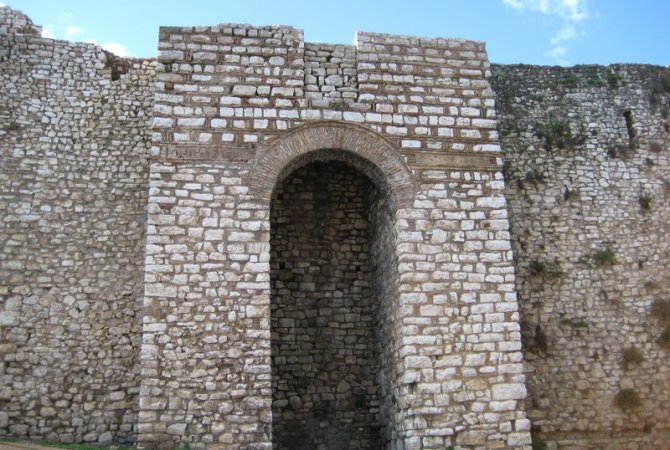
In 1020 the Diocese of Ioannina under sigillium of Basil II belongs to Ohrid archdiocese.
In the late 11th century the area was beset by invasions of the Normans. Anna Comnena in her work "Alexiad" refers to the capture of Ioannina in 1082 by Bohemund, son of Norman king Robert Giyskardou. The text contains important topographical information. She says that the city was already walled, before 1082, and Bohemund repaired preexisting citadel, built a new on the second hill and surrounded both hills with one fortification. In one aspect, the citadel of the Normans was placed in the southeastern hill, today's Its Kale, and this tower belonged to the citadel which is saved next to the church of St. Anargyroi.
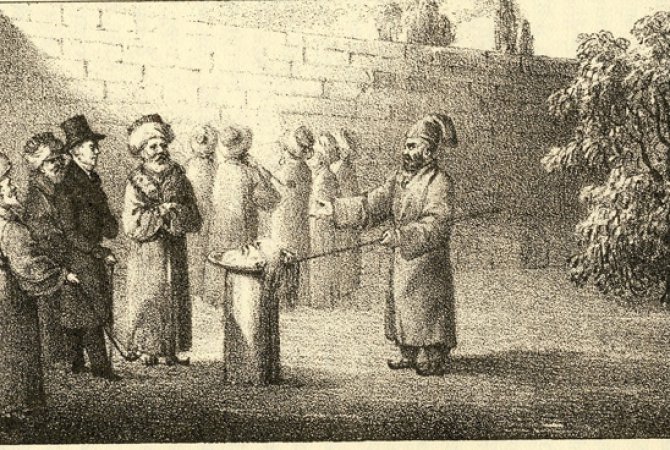
Late Byzantine period (1204-1430)
After the conquest of Constantinople by the Franks in 1204 and the dismemberment of the Byzantine Empire to the Franks and Venetians, decentralized Byzantine provinces in Nice and Epirus were created. Michael I Komnenos Doukas (1205-1215), cousin of the Byzantine emperors Isaac II and Alexios II Angelos, founded the so-called "Domain of Epirus" with its capital at Arta. In Giannina he settled, around 1210, many Byzantine families from Constantinople (Philanthropini - Stratigopoulos - Melissenoi etc.). Michael I, was characterized by the metropolitan of Nafpaktos, Ioannis Apokafkos, as the "tektinamenos", ie the one who built it, "the Ioannina polidion and in education of the castle is erected." Since there was an earlier fortification he probably means that wider enclosure was constructed to also contain the outer of the old wall houses and possibly the fortification of the peninsula neck. In the enlarged Castle, Michael I, settled refugees from Constantinople and other Latin-occupied areas. Later his brother Theodore (1215-1230) legalized them again, probably to appease protests by indigenous residents against the refugees.
Read more +From the start, belligerent competition for claiming the restoration of the empire among the states of Epirus and Nice was developed. In 1259 the battle of Pelagonia was decisive, during which Michael II (1231-1267 / 8) of Epirus was defeated by the army of Nice. Then, Arta was occupied and Ioannina was besieged unsuccessfully. In 1261 Constantinople was conquered by the army of Nice. The state of Epirus retained its autonomous character and its relationship with the liberated Constantinople went through different phases and sometimes rivalry.
After the death of Michael II, the territory was partitioned among his sons. Epirus came under Nikephoros I (1267-1296). His marriage to Anna Palaiologina, niece of the Byzantine emperor Michael VIII, is attached to a kind of trusteeship of Constantinople, which soon turned because of the controversy about the union of the church (1276-1277). In a sense, Ioannina probably joined the Byzantine Empire around 1284, to ensure autonomy, but soon approached Arta again. In 1290 or 1292 the army of the Byzantine Emperor besieged unsuccessfully the fortified city of Ioannina.
Expiring the13th century, the city of Ioannina is an important center of the region with a strong wall, temples and mansions. At that time the island becomes an important monastic center. The well-known Byzantine families Filanthropinos and Stratigopoulos establish monasteries dedicated to Saint Nicholas. The importance of the city is evident by the fact that when, in 1304, Charles II of Naples d' Anjou campaigned against Arta, Anna fled to Ioannina, where according to historical sources of the time describe its castle as an impregnable castle.
The last Komninodoukas archbishop Thomas, son of Nikiphoros was murdered in 1318 by his nephew Nicholas Orsini, Count of Cephalonia. The residents of Ioannina refused to acknowledge the new ruler, so the city asked her affiliation to the Byzantine emperor. Syrgiannis Paleologos, commander of the western Byzantine possessions, received the city of Ioannina. In return the bishopric of the city was promoted to Cathedral (1318) and kept the property, while the residents were granted many privileges. Two imperial decrees of the years 1319 and 1321 by the Emperor Andronicus II Palaeologos ensured the non- concession of Ioannina and the surrounding castles to the Franks and also included tax benefits and exemptions for residents of the city.
"Kastrinoi Ioanniniotai", except those who belonged to military forces, were not obliged to offer military services outside their city. However, the governor of the city was appointed by the emperor. At that time Ioannina lived in great prosperity, "the city on the continent ... memestotai oikitoron, flourishes in wealth ..." as in the first imperial decree. According to the historian L.Vranousi in these texts a kind of early bourgeois society with nobility is described, a society which knows how to govern themselves in proportion with the flourishing states of the cities of Italy.
Nicholas Orsini married the wife of Thomas, Anna and received the title of the bishop of Constantinople with the commitment not to attack Ioannina. But he, taking advantage of the civil war between Andronikos B and C, which has in the meantime erupted between the Byzantine capital, besieged the city unsuccessfully. In 1323 during the armed conflict with his brother John, Nicholas was killed. John persuaded Ioannina to accept him, winning their sympathy with renewal of privileges (1330). In 1337 or earlier he was murdered by his Byzantine wife and residents of Ioannina swore faith to her and her son Nikiforos. Meanwhile, in 1338, the emperor Andronicus III came to the Epirus in order to strengthen the Byzantine domination and especially to confront the Albanian incursions.
During the civil war between John V Palaiologos and John VI Kantakouzinos (1341-7), when the latter became ruler of Epirus and Thessaly, allowed the Serbs to be imposed. Ioannina probably had already been occupied since 1346, while the conquest of Epirus and Thessaly was completed in 1348 and was assigned to the half-brother of Stephen Dushan, Simeon Uresis. In 1366 the people of Ioannina asked Symeon to indicate their ruler in order to provide protection from the attacks of the Albanians. He sent them his groom, Thomas Prelioumpovits (1367-1384).
His acceptance by the city's residents was not unanimous. Thomas took harsh measures for the rulers and the local church, expelled the bishop and took away ecclesiastical estates. He imposed taxes and military burdens which however were necessary to confront the pressing attacks of the Albanians, who had prevailed in Arta and Aitolokarnania. In the decade of 1370 Ioannina was repeatedly besieged by Albanians and the area was deserted. In his wars, Thomas collaborated with the Turks leading Turkish facilities in Epirus. In 1382 he requested and received the title of archbishop by the Emperor Manuel II, while two years later he was assassinated by his bodyguard. The marble tomb was found in 1795 in the bedrock of Ali Pasha's palace.
Thomas made extensive interventions in the walls. As it is mentioned in historical sources of the period "to his custody he built castles with towers shapely and built palaces big and shapely." Probably the strengthening of the fortification was to confront the Albanians perhaps before the attack in 1379. It is his work, the construction of the fortress tower right of the main entrance of the castle, as well as the gate of the northeastern citadel, which served to strengthen the residence of the archbishop. Many and quite generous were the tributes of Thomas to Monasteries (Great Meteor, Great Lavra, Gavaliotissa Vodena). After his assassination, Ioannina was ruled by the Franks with the consent of the Lords. The widow of Thomas, Maria Angelina Doukaina Palaiologina married Prince Izaou Bouantelmonti of the house Atzagioloi in Florence, Lord of Cephalonia. Izaou was named in 1386 Archbishop by the Byzantine emperor and returned the property of the church. At that time the raids of Albanians continued on the outskirts of Ioannina, with the result in 1388-9 by Izaou to declare subordination to the Sultan to face the Albanian threat. That fact in some of the historical sources is regarded as the first Turkish conquest of Ioannina.
Izaou died in 1411 and was succeeded, at the invitation of the local aristocracy, by Charles A. Tocco, duke of Cephalonia, who like his predecessors, took in 1415 the title of Archbishop by the Byzantine emperor. In 1416 Charles captured Arta and ruled until 1429. The "Chronicle of the Toccos," written in 1429 is an epic in verse, which refers to the heroic deeds of Charles and his brother Leonardo. The nephew of Charles I, Charles II and illegitimate sons, hardly had time to rule, as in 1430 the city succumbed to the Turks.
According to most researchers, the Byzantine character of the city remained at the time of the Serbian and the Italian princes, as they undertook their duties after negotiations with the local aristocracy and received the title of archbishop by the Byzantine emperor. Also, the city has known the Albanian occupation, as the Chronicle of Ioannina mentions: "..only the city of Ioannina not surrendering to the territory of the Albanians." The Kastrinoi aristocracy owns villages and land. Crafts and trade is developed. The Chronicles of Ioannina and the Tocchi, written in the early 15th century give important information on the history, topography and social stratification of the city. The Castle has a great reputation at that time and is characterized in the sources: "brilliant, royal and noble."
According to a manuscript of 1819, a copy of the 'Kouvaras ", a chronography of the 14th to 15th century, there were five monasteries in the city and twentyfive churches, of which eighteen were in the castle. It is reported that in the place of Ali Pasha's palace there was a temple complex of the Pantocrator, while in the edge of the palace, the saved the church of Metropolis 1779, is mentioned, perhaps in the place of Fethiye. So, in the late Byzantine period the southeast acropolis, the old citadel of Voimoundos, was occupied by religious institutions perhaps Bishopric and houses towards the part of today's city.
There is ambiguity as to the housing situation outside the castle. Many scholars believe that during the medieval period (perhaps since the 12th century) there were neighborhoods outside the wall. In another aspect, the large area enclosed within the walls, was sufficient for the population of the city and so outside the walls there were only rudimentary commercial facilities, according to the medieval custom of a flea market at the gates of cities, practice, established in the city under Turkish rule. Moreover, in late Byzantine sources there is no reference to burco, ie settlement outside the village walls or a trade-Boris, but only vineyards are listed. From the monasteries out of the walls the Archimandreiou, Agia Paraskevi, Agios Athanasios etc. are mentioned.
Ottoman
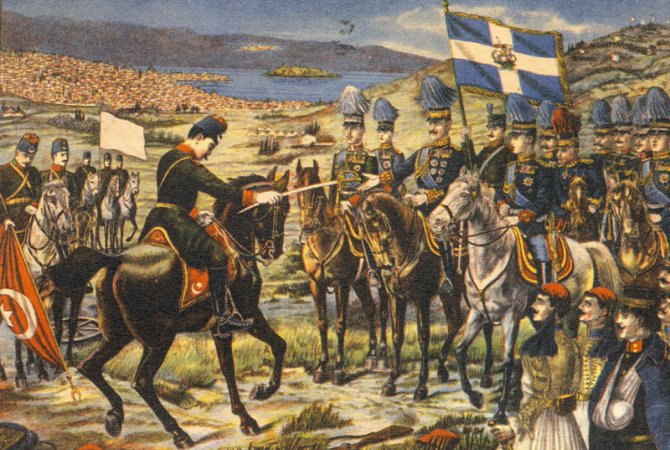
Since the conquest (1430) until the appointment of Ali Pasha (1788) The city of Ioannina surrendered after negotiations with the besieger of Sinan Pasha in 1430. Reliable description of the occupation is given by the historian Laonikos Chalkokondilis. By imperial order from the Sultan Murad II, known as "Definition of Sinan Pasha", the previous privileged status was maintained and its inhabitants have provided tax exemptions, free movement of trade and its release from captivity and the mass kidnapping of children. Also, the bishop maintained the old ecclesiastical rights and the judiciary. The commitment of the conquerors for not converting churches into mosques seem to be directly compromised. According to a source reporting on events a few days after a fall, the Turkish sultan sent eighteen Turks to receive the Castle, who ... "the Church of the commander was destroyed, where he was in the sip of the city" and then .... 'to the Great Almighty, where the bell tower stands ... where girls were ripped after the operation.
Read more +«So, in southeastern Acropolis soon after the conquest the cathedral was destroyed, but not completely as ruins preserved until the 18th century. In its place in Fetchie mosque was built, which means mosque of conquest, certainly as a symbol of allegiance to the new sovereign. The Fetchie mosque was reconstructed later by Ali collided to his palace.
After 1430 the town develops outside the walls on the roads towards Arta, Paramythia, the Ionian Sea and Albania. Muslim neighborhoods are created like Tourkopalouko (camp of the Turks perhaps near St Nicholas Market) and later in Kaloutsiani. Around the Castle the Jewish neighborhoods Tsoukalas, Livadioti, small and large Rouga are developed. Outside the Main Gate (in the present Independence street) the market is growing (trade- bargain). In the center of the market a temple was built between 1481-1512 the second largest mosque, the mosque Baraikli.
During the 16th century and until 1611 the reconstruction of Muslim religious buildings is limited. In this period, only four mosques are erected outside the market relativel y decentralized (Siem se Dean, Liam mosque, Gkiach Nama mosque, Dede Ourouts). The 16th century is characterized by demographic growth. Two Turkish ledgers of the years 1564 and 1579 provide relevant information. The city's population reached 7000 inhabitants. There were thirty-six districts of Christians inside and outside the castle and fifty-eight Muslim households and thirty four Jews are recorded.
At the moment there is great spiritual growth. An educational institution operates in the Castle and the island remains a monastic and spiritual center. Ioasaf Philanthropinos renovates the Filanthropinon monastery, which is decorated with important frescoes in 1542 and 1560. During the same period the monastery Strategopoulos is decorated with murals and the monasteries of Eleousa and Prodromos the Baptist are founded by the famous family of Apsaras. According to a modern source, Ioannina was called 'monachopolis "because of the many monks who lived in the city and the surrounding area.
17th century is characterised by the failed uprising of 1611 by Bishop Trikis and Stagon Dionysios the Philosopher or "Skylosofo". The privileged status is withdrawn, the Christian churches inside and outside the walls are damaged and persecution of Christians is following, who are expelled from the castle, where only the Turks live. From kastrini Christians, the poorest settled around the lake area, Siarava and Livadioti while the wealthier move to the northwestern areas and perhaps the Tsigara neighborhoods Platanos, seraglios, Liam metziti, Archimandreio were created.
After 1611 the city is dominated by the Muslim population. In the castle the complex of the mosque of Aslan Pasha is founded in 1618 in the northeastern citadel in place of the palace of the Byzantine Governor. Several mosques are built outside the walls (Mehmet Pasha, Zevadie, Isouf aga). The Muslim neighborhoods have a mosque as a centre, in which are annexed and accompanying buildings. It is the period of completion of the Ottoman conquests. The number of Muslim inhabitants of Ioannina is growing, fueled by Islamisation. In 1635 the feudal right to occupy property by Christians is abolished and Christian aristocracy faces the dilemma of losing property or to change his faith. So, according to sources, over three hundred Christian families changed religion. Apart from population growth, the improvement of the economic conditions of Muslims is also impressive, a kind of urbanization, which is due, in proportion, to their involvement in trade. So, Muslims and wealthy merchants were one prosperous and educated class. Many of them made religious donations (vakfigie) and many urban estates passed to religious institutions.
Evliya Çelebi in 1670 describes a welfare image of Ioannina. The city authorities use the castle as a base, which now is resided only by Muslims, divided into four districts. The city was divided into thirty-seven districts, of which eighteen Muslim, fourteen Christian, four Jewish nd one agypsy. The number of Muslim institutions reaches seven within the castle, and thirtyseven out of it. They include mosques, schools, reading schools and outdoor places of prayer. Also, the existence of seven monasteries (teke) is delivered. Evliya praises the architecture of seraglios, mansions and simple houses, as well as the mosques, public buildings (inns, hammams etc.). It also describes large open spaces such as squares, crossroads with wells and extensive cemeteries. At the end of the 17th century, the city extended from Kaloutsiani to Sarai Mahal and from the Castle to Loutsa.
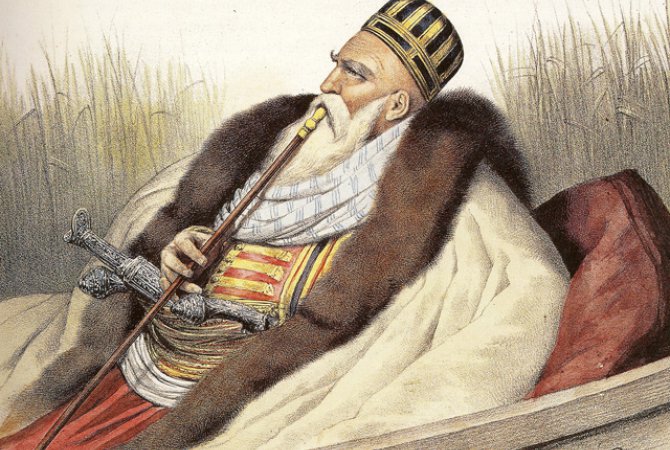
The period of Ali Pasha (1708-1822)
In 1788, Ali Pasha was officially appointed Pasha, an important and controversial political figure of the period. Born in Tepelene from a noble family, he was the son of the daughter of the Bey of Konitsa, Hamko. In important positions he used Greek notables of the region and has a positive attitude towards Ioannina merchants and craftsmen. During this period, the Giannina were an important center of trade and handicraft laboratory of the Balkans. Trade relations were characterized by a variety of currencies and rates appeared in suspended directories.
Merchants and craftsmen organized in guilds (Esnafia or favors) were operating on the Danube, Western Europe, Russia and Egypt on basic types leather, textiles, weapons and silverware items. The English traveler Henry Holland regarded the Ioannina market as one of the most remarkable of the Balkans, richer in gold and textiles from that of Thessaloniki. During Ali era, the city acquired European interest, with the establishment of consulates, international trade and high acquaintances of the ruler.
Population growth was noted and its inhabitants reached twenty and in others thirty thousand. The city area expanded with new neighborhoods: Zevadie - Karavatia - Loutsa, reaching the limits maintained until the 1960's. The rich military action of Ali was accompanied by many fortifications in the area. In Ioannina a powerful castle was built (1815), which followed, in general, the design of the earlier Byzantine. With the implementation of so-called bastion fortification system major embankments were made. In Southeast citadel, which was fortified with an internal wall, the resplendent seraglio of Ali was built and the Fethiye Mosque was rebuilt. In the foothills of northeastern citadel, a large building for the riding school, the famous Soufari Seraglio was built.
The hegemony of Ali was associated with the peak of an economic and spiritual prosperity, which characterized Ioannina from previous centuries. Many of the scholars of the 17th, 18th and 19th century originated or were active in the region, such as Methodius Anthracite, Balanos Vassilopoulos, Neophytos Doukas, Athanassios Psallidas, Ioannis Vilaras. The city became a cultural center thanks to renowned schools, most of which were legacies of emigrants. The Epiphanius School, founded in 1648 by Abbot Epiphanius, merchant in Venice, was later renamed Maroutsaia (1742) in honor of those who renovated it. Eugene Voulgaris taught in the school.








